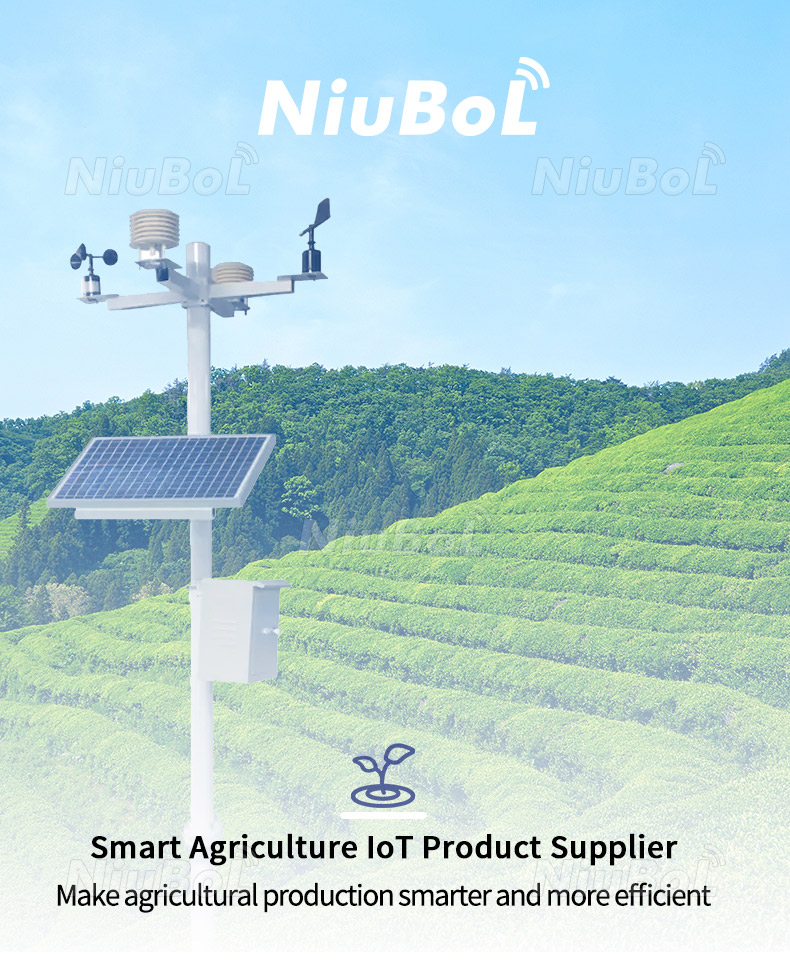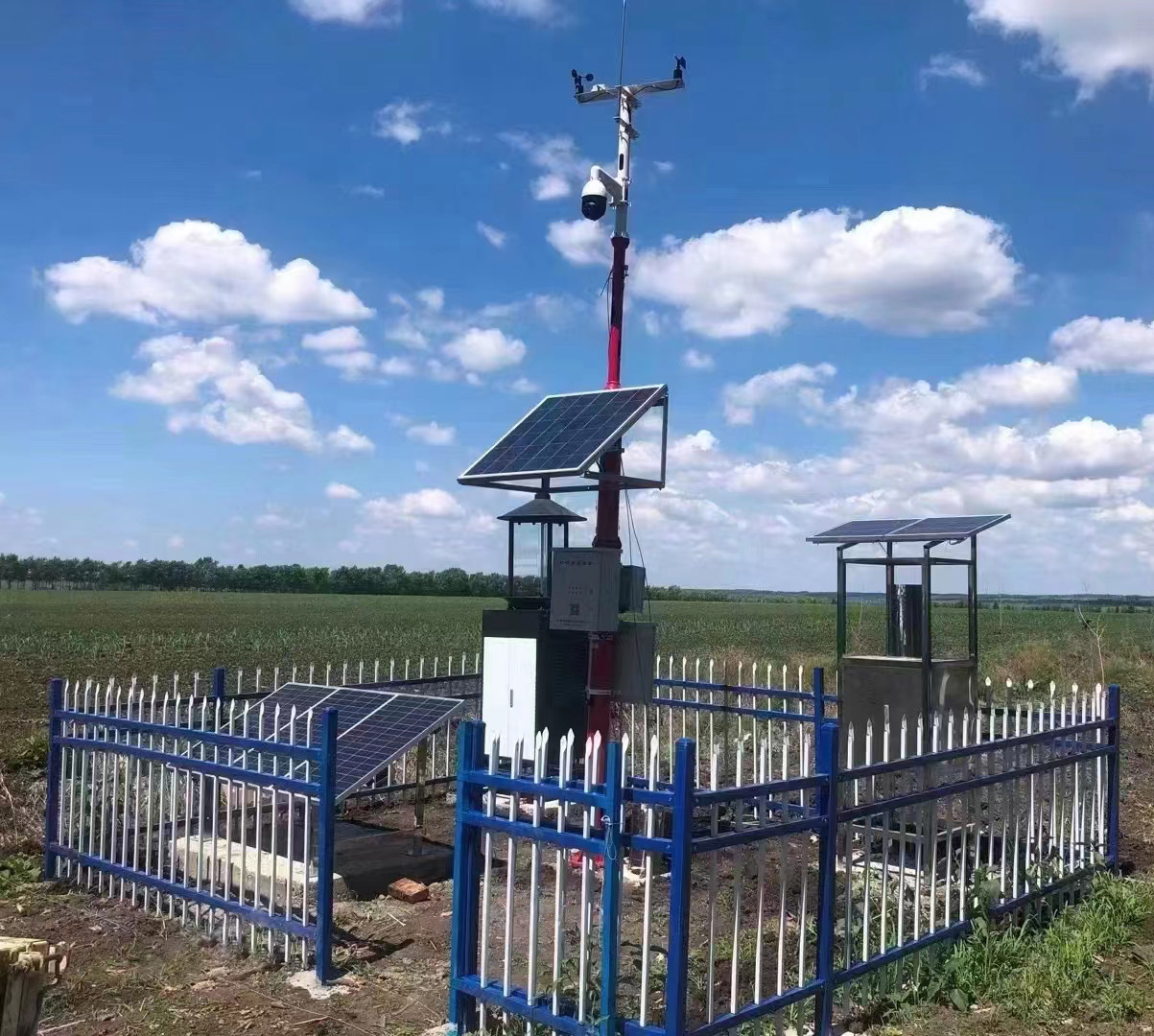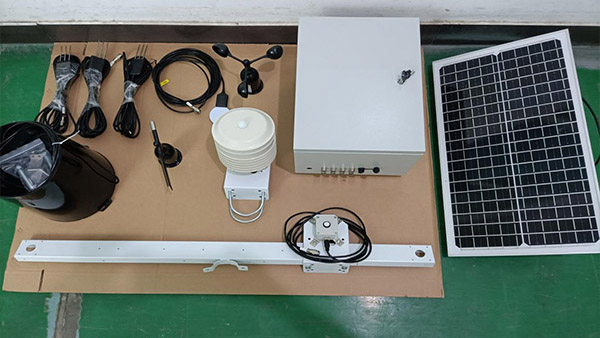

— Blogs —
—Products—
 Consumer hotline +8618073152920
Consumer hotline +8618073152920 WhatsApp:+8615367865107
Address:Room 102, District D, Houhu Industrial Park, Yuelu District, Changsha City, Hunan Province, China
Product knowledge
Time:2022-07-11 10:30:57 Popularity:636
An agricultural weather station typically consists of five main components that work together to monitor and manage environmental factors crucial for farming operations. These components include the weather sensor part, the weather station bracket part, the collector and transmission module, the solar panel and battery, and the background computer terminal. Below is a detailed explanation of each of these parts and their functions.

The weather sensor part is at the core of the agricultural weather station. It is responsible for monitoring a wide range of meteorological elements, which are essential for crop growth and overall farm management. The sensors can measure various factors that directly influence the agricultural environment. These include:
- Wind Speed and Direction Sensor: Understanding wind patterns helps in predicting weather changes and assessing the risk of wind damage to crops.
- PM2.5 Sensor: Monitoring air quality by measuring fine particulate matter (PM2.5) helps determine the impact of pollution on crops and human health.
- Light Intensity Sensor: Light is crucial for photosynthesis, and monitoring its intensity helps in assessing plant health and growth potential.
- Carbon Dioxide (CO2 Sensor): CO2 levels affect photosynthesis and can be an indicator of overall air quality and plant productivity.
- Air Pressure Sensor: Monitoring air pressure helps predict weather changes, such as storms or high-pressure systems that can affect crop conditions.
- Rainfall Sensor: Measuring rainfall provides crucial information for irrigation management and water resource planning.
- Air Temperature and Humidity Sensor: Temperature and humidity levels are essential for assessing the growing environment for crops and predicting pest or disease outbreaks.
Sensors can be selected based on the specific needs of the agricultural operation, allowing for customized monitoring.
The weather station bracket part is designed to support and securely hold the various components of the weather station. This includes:
- Sensors: The bracket provides a stable platform for placing various sensors at optimal locations, ensuring accurate data collection.
- Collectors: The bracket holds the data collectors, which gather information from the sensors.
- Transmission Modules: These modules, which handle data transmission to the background system, are also mounted on the bracket.
- Solar Panels: In many setups, solar panels are mounted on the bracket to supply power to the entire weather station.
The bracket is crucial for organizing and protecting these sensitive components while ensuring their longevity and proper functioning in the field.

The collector and transmission module is responsible for gathering the meteorological data from the sensors and transmitting it to the backend system. This part typically includes:
- Data Collection: The collector module gathers information from the weather sensors, such as temperature, humidity, and wind speed.
- Data Transmission: Once the data is collected, the transmission module wirelessly transmits it to the backend computer system for processing and storage. This can be done using various communication protocols such as Wi-Fi, 4G, or other IoT-based technologies.
- Wireless Communication: This feature allows for remote monitoring of the station, making it easier for farmers to access real-time data without needing to be physically present at the station.
The collector and transmission module is essential for ensuring seamless and continuous data flow from the weather station to the cloud or local server.

The solar panel and battery system provide the necessary power to keep the weather station running 24/7. This part is crucial for off-grid or remote agricultural settings where access to electricity may be limited or unavailable. The components include:
- Solar Panel: The solar panel captures sunlight and converts it into electrical energy, providing power to the weather station during the day.
- Battery: The battery stores the energy collected by the solar panel and ensures the weather station remains operational at night or during cloudy days when sunlight is unavailable.
The solar panels and batteries help ensure that the weather station operates continuously without interruption, regardless of the time of day or weather conditions.

The background computer terminal is the central hub where all the data from the weather station is displayed, stored, and analyzed. This part consists of:
- Data Display and Storage: The computer stores the real-time data collected from the sensors and allows farmers to access this information in an easy-to-understand format.
- Real-Time Monitoring: Users can monitor live weather conditions and other environmental factors through visual interfaces on the computer terminal.
- Historical Data Query: The system stores historical data, which can be accessed and reviewed to identify trends or anomalies over time. This helps in long-term agricultural planning and decision-making.
- Remote Alerts: The computer system can send over-limit alerts or warnings if certain environmental conditions, such as extreme temperatures or humidity, are detected. These alerts can be sent remotely via email, SMS, or other notification systems.
- Data Export: The system allows for data export in various formats such as Excel or PDF, enabling farmers to generate reports for further analysis or record-keeping.
- Data Analysis and Visualization: The computer system may include analytical tools that help farmers interpret the data collected. Visual graphs and charts provide insights into weather trends and their potential impact on crops.
This component is essential for managing and utilizing the collected data effectively, empowering farmers to make informed decisions.
Agricultural weather stations are composed of five primary components that work together to monitor, collect, and transmit environmental data crucial for farming operations. From weather sensors that capture real-time meteorological data to the solar panel system that ensures 24/7 operation, each component plays a vital role in the overall effectiveness of the station. The background computer terminal serves as the control center for data storage, analysis, and visualization, while the collector and transmission module ensure seamless data flow.
By integrating these components, agricultural weather stations offer farmers the ability to make data-driven decisions, optimize resources, and improve crop yields, ultimately contributing to more efficient and sustainable farming practices.
Related recommendations
Sensors & Weather Stations Catalog
Agriculture Sensors and Weather Stations Catalog-NiuBoL.pdf
Weather Stations Catalog-NiuBoL.pdf
Related products
 Combined air temperature and relative humidity sensor
Combined air temperature and relative humidity sensor Soil Moisture Temperature sensor for irrigation
Soil Moisture Temperature sensor for irrigation Soil pH sensor RS485 soil Testing instrument soil ph meter for agriculture
Soil pH sensor RS485 soil Testing instrument soil ph meter for agriculture Wind Speed sensor Output Modbus/RS485/Analog/0-5V/4-20mA
Wind Speed sensor Output Modbus/RS485/Analog/0-5V/4-20mA Tipping bucket rain gauge for weather monitoring auto rainfall sensor RS485/Outdoor/stainless steel
Tipping bucket rain gauge for weather monitoring auto rainfall sensor RS485/Outdoor/stainless steel Pyranometer Solar Radiation Sensor 4-20mA/RS485
Pyranometer Solar Radiation Sensor 4-20mA/RS485
Screenshot, WhatsApp to identify the QR code
WhatsApp number:+8615367865107
(Click on WhatsApp to copy and add friends)